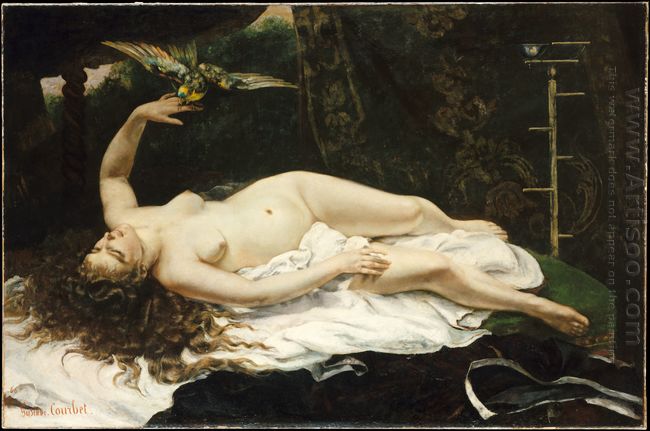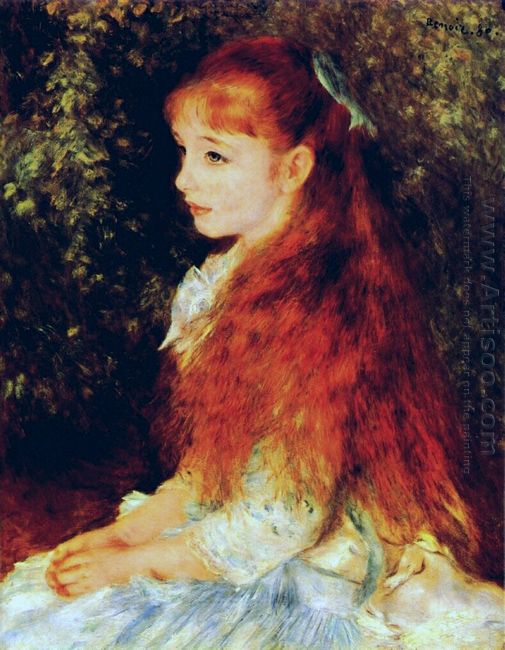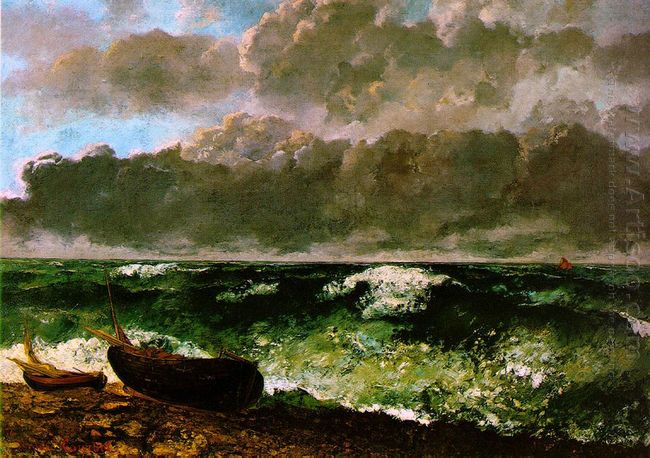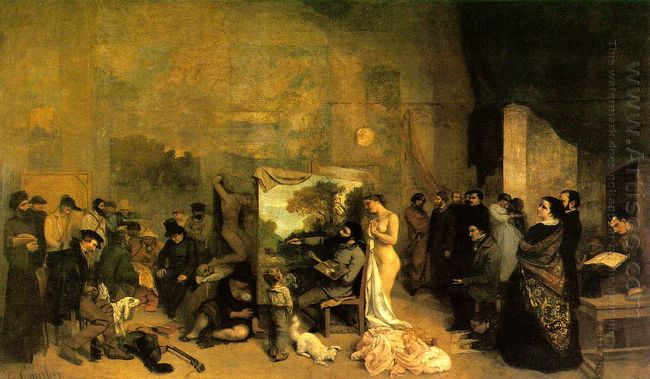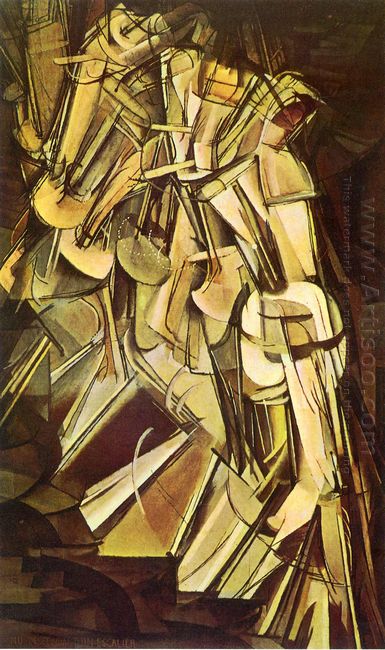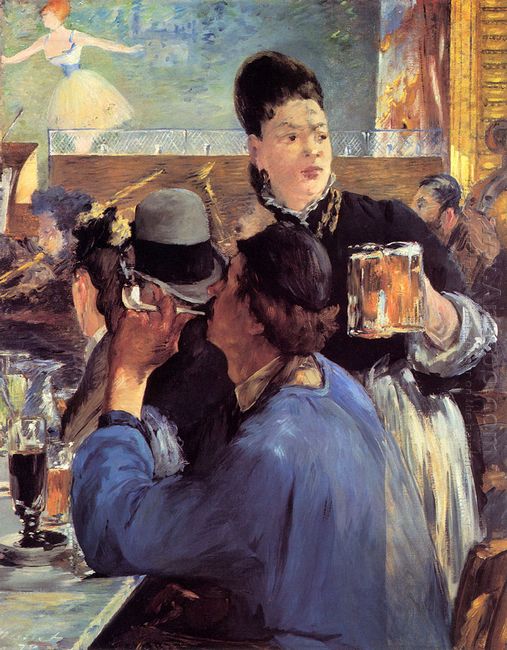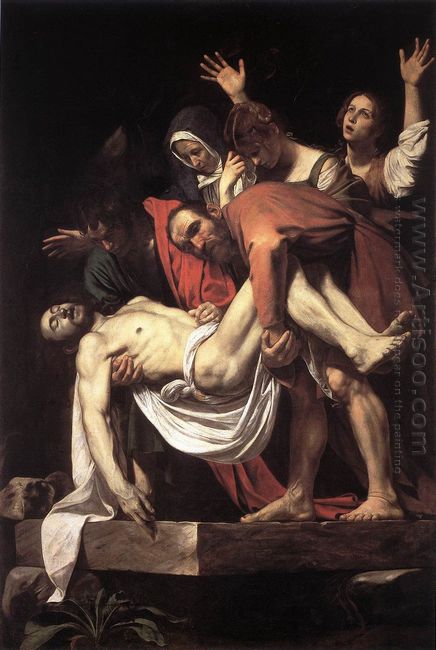The Meeting Bonjour Monsieur Courbet made in 1854 was the performance of the country where he walked across with his painting tools. His friend and boss was respectfully greeting him. For people who were get used to the academic art works, this painting seemed to be very naïve. The simple layout did not have the graceful posture with no smooth lines and touching colors. In terms of “elegant” artists and their supporters, the whole idea that drew the painter as a tramp without wearing a coat was treason and heresy. This painting was actually a group portrait where the painter appeared arrogant, self-confident and self-respect. He intentionally lowered the horizontal lines to make the figures tall. He also used the outdoor light and bright and transparent colors to show a masterpiece of self-expression. What he painting depicted was the painter Courbet carrying a picture box out painting and meeting his friend Brua and his servant on the way. The intention of this painting was the performance of the painter’s arrogance. So, his handful wedge beard was dubbed the “Hello, Mr. Courbet”!
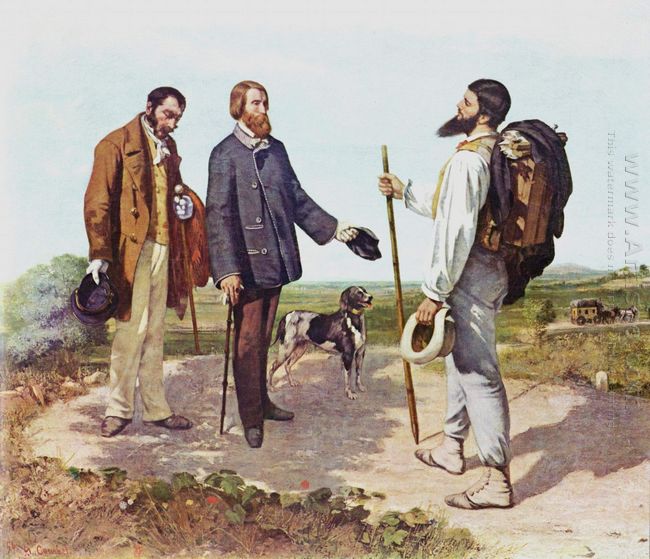
When it comes to Courbet’s revolutionary and critical sense, it was necessary to mention this painting The Meeting Bonjour Monsieur Courbet. If you did not say which one is Courbet, probably most audience would guess wrong and think the person dressed in graceful clothes and leather shoes is Courbet. In fact, the backpacker closest to us in the painting was the real Courbet. From this painting, we saw Courbet did not beauty himself and what we saw was the real Courbet. The real significance of this painting was that the Courbet’s sponsor met Courbet, but Courbet was dressed casually and not like a gentleman. This was not in line with rule as that time, which reflected the painter’s attitude to attack the society. At the time of the society, the revolutionary and critical spirit of Courbet was quite remarkable. Later it was said that Gauguin also referred to Courbet’s skill to paint a picture of Good Morning, Mr. Gauguin, which was about to follow in an experience against the traditional meaning. But it was not so famous, while still worth learning.
